Diane

Anderson Cooper shot by Diane Arbus
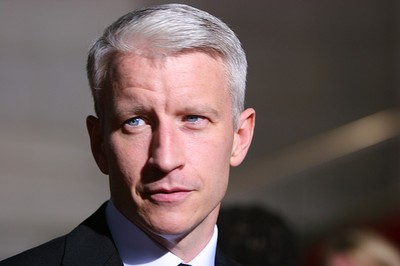
Kimmel

As term is coming to an end, I thoroughly realise how exciting Gender studies are. In retrospect, the most entertaining and interesting tasks we were ever given to write during the course of 4 years proved to be the very last. Ironically, this was also the term somewhat less related to our actual field.
The law as a tool for change?
The duality that is masculinity/femininity is today based on a set of dual associations that portray men as powerful and women as powerless. In addition to productive/reproductive, these include also active/passive, warrior/nurturer and hard/soft etc. and benefit men's access to power. The notion that caretaking and nurturing children at home is a feature of the feminine gender leads to an inequality in the division of these burdens between men and women. Consequently, women generally carry dual burdens which may in turn have effects on their equal opportunities in work life, as this gives men a better starting point in pursuing a personal career and economical, cultural and political power within society.
Gender theorists speak of how the need of reforming men and women's equity of labour in both the productive and reproductive sphere requires not only a individual change but rather a structural change. However, does regulation through the law necessarily constitute the action that needs to be taken? The law does prove a powerful statement with which people generally conform in order not suffer from the repercussions of disobedience. Given how deeply-rooted these gender roles come across, in the spheres of production and social reproduction, it can be argued that the answer is yes. Provided that merely individual change is not enough; the law with its standing as the highest authoritative legal source in a society is likely the most efficient measure when needing to address the need for change to a larger portion of a population. Merely advocating for equality at grassroot level or through education may not be sufficient in terms of a rapid change.
Using legislation to sort out of existing inequalities in terms of for example men's and women's salaries regarding the same work does not undermine an integrity aspect and should therefore not need any further justification. Neither does legislation promoting equal equity in regard to taking part in the reproductive sphere. This is however the case only as long as the legislation only establishes legal possibilities to, for example paternal leave so that employers and men take notice of this notion, and is not obliging the men to do so. In the latter case of obliging, the achievement of greater good in the long-run may still perhaps justify the freedom of individual families to choose for themselves being overruled.
Photo: Terry Richardson
Missy

Here: The cover of the latest issue of Acne Paper, shot by Daniel Jackson.
Karin

Franca Sozzani and Steven Klein, eat your hearts out.
Photo: Ingrid Rönnblom
Rose

The Ballad of Jack and Rose
improper feelings for one another.
There's a moment in the film in which she explains:
-If you die, then I'm going to die.
-If you die,there will have been no point to my liviing, he responds.
Lily
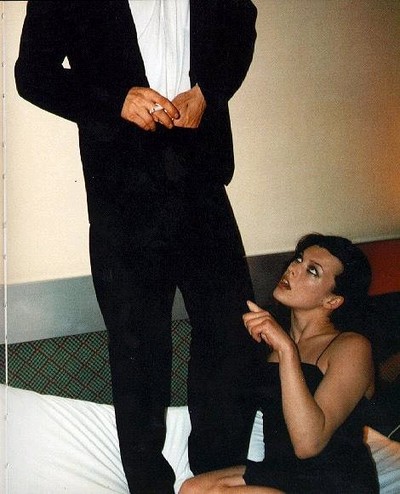
Admittedly, they did catch me off-guard when also carrying their magazines in my mother-tongue. Impressive. I decide for once to actually glimpse through this piece of offering, only to find a section called Young People Ask- Why don't girls like me? Tips targeted to ÿoung males include (apart from cultivating good manners and conversation skills and maintaining personal hygiene) always taking the initiative;
If you think a friend whom you admire might make a good marriage mate, let her know you are interested in her. Be clear and fortright in declaring your feelings. Yes, it can be nerve-racking. You fear rejection. But your being willing to take the initiative is a sign that you have grown up.
On what not to do the following is disclosed:
Don't flirt. A flirt uses flattering speech and provocative body language. He has no intention of pursuing an honorable romance relationship. Such actions and attitudes igonre the Bible's counsel to treat "younger women as sisters with all chastness". Flirts make poor friends and worse marriage mates. Discerning girls know that.
It would be highly ignorant to judge on the basis of just a small passage in what could almost be described as a pamphlet and especially knowing particularly little about their beliefs. There is however a part of me which is immediately thinking that the 18th Century likely will be calling requesting its values back, any time soon. Having recently finished work on the topic of whether Relgion creates gender roles I find the reading I was just subjected to, to be rather interesting.
Photo: Juergen Teller.
Lara

Klein's aesthetic is macabre and cinematic and this frame in particular will make you think of, say, the likes of David Lynch or David Cronenberg. The first thing that immediately comes to my mind viewing this is J.G Ballard's controversial 1973 novel Crash, which was mise en scène by Cronenberg in 1996, about people with the automotive paraphiilia of getting sexually aroused by causing and experiencing real car-crashes. With that in mind, I'd think the girl just may have deliberately crashed her speeding car against a wall, resulting in the death of the man and finally enjoying the aftermath with a little cigarette. Would this image have been less disturbing, were the roles reversed? I think for some the answer would quite likely be yes.
Brian
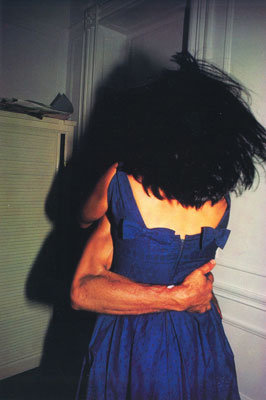
Nan Goldin -The Hug (1980) NYC
Roger
-Hallo...
-Hallo.
- Do you need help?
-Who doesn't?
-Is that your heart?
-Yeah.
-Big?
-It's small now.
-Small?
-It was bigger before.
-Scary.
-Yeah, that's my problem.
Barack


With Richardson to his left
Marlon
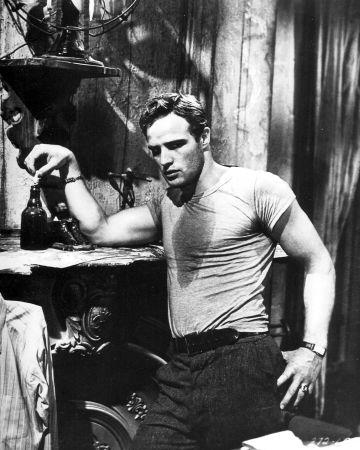
Marlon Brando in A Streetcar Named Desire
You realise quickly though that even occasionly hosting space for utter unimportances and random guilty pleasures can have legitmy as long as it's done under the pretense of something else or at least in a context that shifts focus into something just a little bit more mindful and worthwhile. As this is as self-conscious as I'll ever get, I might as well throw in doing something which will definitely be a one-off and remember it as a promise, why don't you?
Now, given what was just said, I do think that the t-shirt, casual as it is, can result in a very efforlessly smart and good look. Well, provided it is not too loosly or snuggly-fitting and is simple. Black or just white. Afterthought; maybe just black for some people. After all, there is one's complexion to think about... However, in regard to this piece of garment my take is not at all of any interest. No no, what I offer on the subject is of very little worth, please rest assured. Nevertheless, I rather find it interesting to learn what impact the film industry of the wicked west originally had on the boost of sales and popularity of the t-shirt.
Once nothing more than an utile cotton garment worn merely as an undershirt by the army troups in WWI (Apparently, less clear is whose army is to be credited for this introduction. Allegedly, the French Army, British Navy and the British Navy are all exclusively claiming) The film industry would later play a significant part in popularizing the t-shirt, creating a new trend by an original use of this garment that already existed in the wardrobe of every male but was never ever seen worn out on the streets (apart from on the back of construction workers on particularly hot days)
Most notably it was Marlon Brando wearing the t-shirt in Elia Kazan's classic A Streetcar Named Desire that would render this shift. The t-shirt he wore was a "sexualised reimagining" of the standard t-shirt at the time. Up until then t-shirts had no shape, no fit.With the film's costume designer Lucinda Ballard the t-shirt became more accentuating of the physique and revealing, as it was sewn in at the back for Brando. Impressively, Ballard's work on A Streetcar Named Desire earned her an Oscar for costume design. James Dean mimicking his idol Brando would later wear the t-shirt in Rebel Without a Cause and the two would subsequently become advocates of it for a new generation of men; as resorting to clichés will have me say.
Bob

Photography can appear so timeless, much like this edgy piece. Who would say this was more than 40 years old?
Photo: Bob Richardson
Anjelica
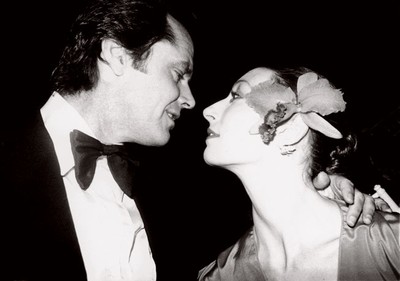
On the topic of love she so wisely offers: "There is really no justice in love. You can't go into something emotional with a bargain in mind. You have to love unequivocally. You have to be direct in your emotions otherwise you can't expect anyone to deal directly with you."
In an interview with Parade Magazine Jack said about impregnating another woman with a child, while still in a relationship with Huston and upon learning the news:
"I was in a quandry. I knew having a child was a boon to my life, but I was in a wonderful relationship with Anjelica. It was as good as it gets. I immediately told her what was up, and she made the decision for us. Anjelica's first response was, 'You have to support this woman' Her second response was to come down to my job and beat the hell out of me. She really beat me up, I tell you. Anjelica can punch!"

Jacques
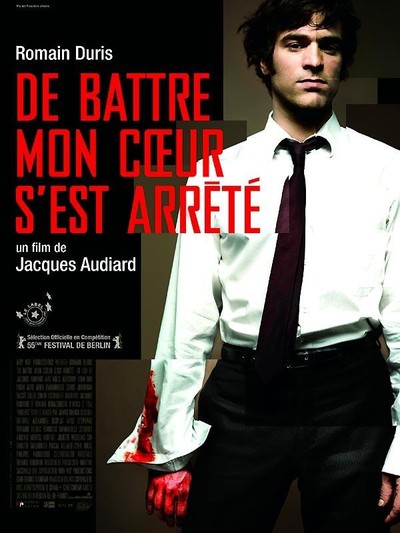
,.
De Battre Mon Coeur S'est Arrêté (The Beat My Heart Skipped). A gem from 3 years ago. Do I genuinely believe anyone would want to watch a film, simply judging by artwork like this? I sure as hell would hope so.
Helena


Jennifer Chambers Lynch' film Boxing Helena which she wrote at 19 (!) screened at the Sundance Film Festival in 1993 to massive expectations and was allegedly the most anticipated film of that year's section. Why would it not, with the film being the directorial debut of David Lynch' daughter? The latter had jumped on the stardom wagon with the ever so popular TV series Twin Peaks, launching him from the art house film theatres into the television sets of million of viewers worldwide. At the festival, Lynch Jr asked the public and press for her work to be separated from her fatther's and acknowledged in its very own right. Yet for her debut feature she used Sherilyn Fenn (known for her role as Audrey in Twin Peaks) in the title role of Helena and also used her father's cinematographer to lense it. So much for distancing, no?
The film faced its fair share of stirring controversy even before its release, mostly due to the actresses who quit the project deeming the role to be too risqué. Kim Basinger (likely not wanting to get typecasted after Adrianne Lynn's 9 1/2 Weeks) quit despite facing a law suit for the sum of $8 million for the breach of a verbal agreement which she was ordered to pay, resulting in her declaring personal bankruptcy. Even Madonna rejected the part at the height of her notorious Erotica-phase. Shouldn't this film then have served her well as an acting vehicle? Two hours after its screening, Boxing Helena died a merciless death, sending whatever hope Sherilyn Fenn had of a A-list future into despair. It was brutally savaged by critics, taking Lynch another 14 years making her second film.
I had almost forgotten about this film until seeing it again for the second time the other day. Understimated? No. It is however a prime example of one of those films that are so bad they actually almost become somwhat good. The storyline is very interesting, it has to be said, and with more competence involved in the making of the film it could have been a real contender so to speak. The execution is however far too poor for the film to offer any substance and instead it ends up looking like a B-rate steamy softcore adult film. Keeping things short, the story is of an obsessed surgeon who being unable to forget a former bitchy flame, imprisons her inside his home after an unforunate car accident that resulted in the amputation of her legs. Later he also amputates her arms, ultimately cutting her off from the world outside and making her dependent on him, to secure being the only one to ever love her. Yet another tale of the nautre of sexual obsession. When Woman in Chains by Tears for Fears starts playing as a backdrop in the film, it all just becomes a little too literal to not provide laughs.
The whole film can be streamed online through the following link:
http://www.megavideo.com/?v=0S3R0VJT
Agyness


Miranda
Shot on a mere budget of $150, above is Miranda July's short film titled Are You the Favourite Person of Anybody?.
And if you are; how sure are you? Very certain- Confident -Think so- Not so sure- Could be?
Starring: Miranda July and John C. Reilly.
Note: July is the author of the short story collection No One Belongs Here More Than You and director of Me and You and Everyone We Know.
Noah
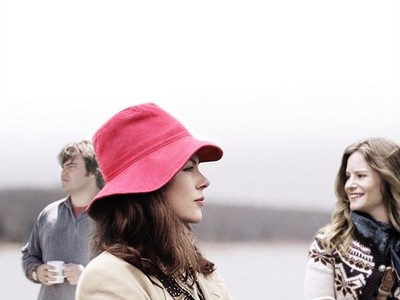
Noah Baumbach's Margot at the Wedding
The New Yorker (not to be confused with New York Magazine) is such an intelligent and high-profile publication,unmatched by others, that stands the test of time. The New Yorker has since long had a tradition of highlighting the best of modern fiction by featuring short stories by contemporary writers. To mention just a few it has seen the contributions of the likes of Zadie Smith, Philip Roth, Richard Yates, Haruki Murakami, J.D Salinger and John Cheever. It's website currently features an enormously hillarious story by talented director Noah Baumbach who helmed one of the best films of recent years, The Squid and the Whale and whose sophemore effort is the somewhat more flawed, yet interesting Margot at the Wedding.
It's called Buzzed and is about what goes on inside the head of a bee jacked up on cocaine.
Following fact from The Times is provided for the reader which served Baumbach as inspiration:
To learn more about the biochemistry of addiction, scientists in Australia dropped liquefied freebase cocaine on bees' backs, so it entered the circulatory system and brain. The scientists found that bees react much like humans do: cocaine alters their judgment, stimulates their behavior and makes them exaggeratedly enthusiastic about things that might not otherwise excite them.
An excerpt:
"My little feet on the petal. Is that odd? It seems so funny to me. Oh, my God, you gotta try this pollen. It's so fucking . . . it's better than the nectar, even. This is the best fucking pollen I've ever had. God, I so badly wanna just go sting the fuck out of someone, you know? Just land on their ass and sting. . . . I'm so fucking jazzed right now. And then I hope they're allergic and they just blow up! We gotta get out of this hive, we gotta get mobile . . . "Going Mobile"!
Read the rest on New Yorker.com
http://www.newyorker.com/humor/2009/05/04/090504sh_shouts_baumbach
Jefferson
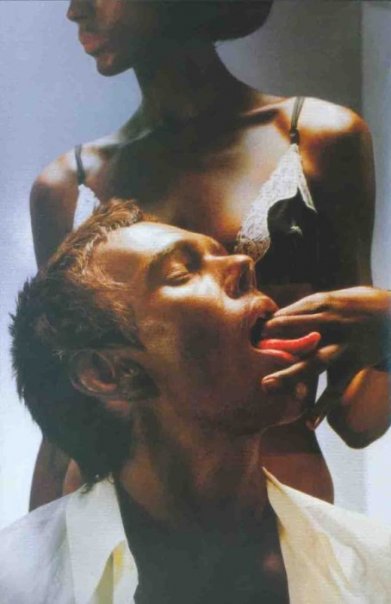
Now don't be a sourpuss.
The one single most useful advice you will likely be given is that the most important relationship you will ever have is the one you have with yourself.
Photo: Dazed & Confused, November 1998 Issue.
Sven

Sven Nykvist with Andreij Tarkovskij
There's a whole shebang of people to be credited for the effort of creating a feature film; there are producers, executive producers, screenwriters, editors, cinematographers and costume designers and pretty much a list that goes on from there. I admit to sometimes neglecting this fact when watching the Globes or the Academy Awards on television, wishing there was a fast-forward function to jump ahead, past awardings in categories such as Best Achievement in Sound Editing, straight 'til the far more suspensful and exciting moments of made-up-for-the-camera smiles for fellow contenders and larger than life speeches in the actor categories. Yet, it's wonderul that these more anonymous contributors of a film are publically acknowledged, by and in front of their peers in such grand-scale at the most prestigious of functions imaginable.
Gone are the olden days when studio executives and producers such as the likes of Jack L Warner, Samuel Goldwyn and David O Selznick would end up with most of the credit for a film. Today, partly due to the effort made by the auteurs (directors) of the French Nouvelle Vague (Francois Truffaut, Jean-Luc Godard, Claude Chabrol, Alain Resnais et alia) in reclaiming this aforementioned credit, focus is to a much greater extent on the film director who serves as a creative leader, executing his entire vision into what is seen on the screen and thus making the magic happen. As such, late director Ingmar Bergman was a visionnaire of his very own kind, often ahead of his time in terms of the depth displayed in themes and writing.
One of the great achievments of Bergman's films lies in their quality of being a visual treat for the eye. For this, much credit is due Bergman's cinematographer and friend Sven Nykvist who had an unique sense of natural lighting, using it masterfully to create ambience and enchancing sentiments of characters. He remains one of the most succesful cinematographers in film history and is a part of very small group of cinematographers who have been able to make a true mark for themselves that stretches far beyond the admiration of just the industry. Other notables include cinematographers Lazlo Kovacs (who worked on the American New Wave) and Wong Kar Wai's recurring team member, Christopher Doyle.
Nykvist achieved not only one but two Academy Awards for his work in Bergman's Cries and Whispers and Fanny & Alexander. Notably he also worked with other maîtres of the cinema such as Woody Allen, Michelangelo Antonioni and Andreij Tarkovskij.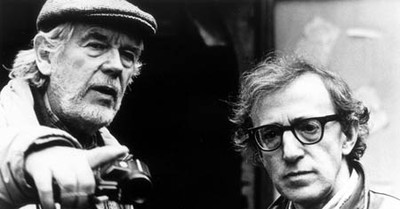
Sven Nykvist with Woody Allen
